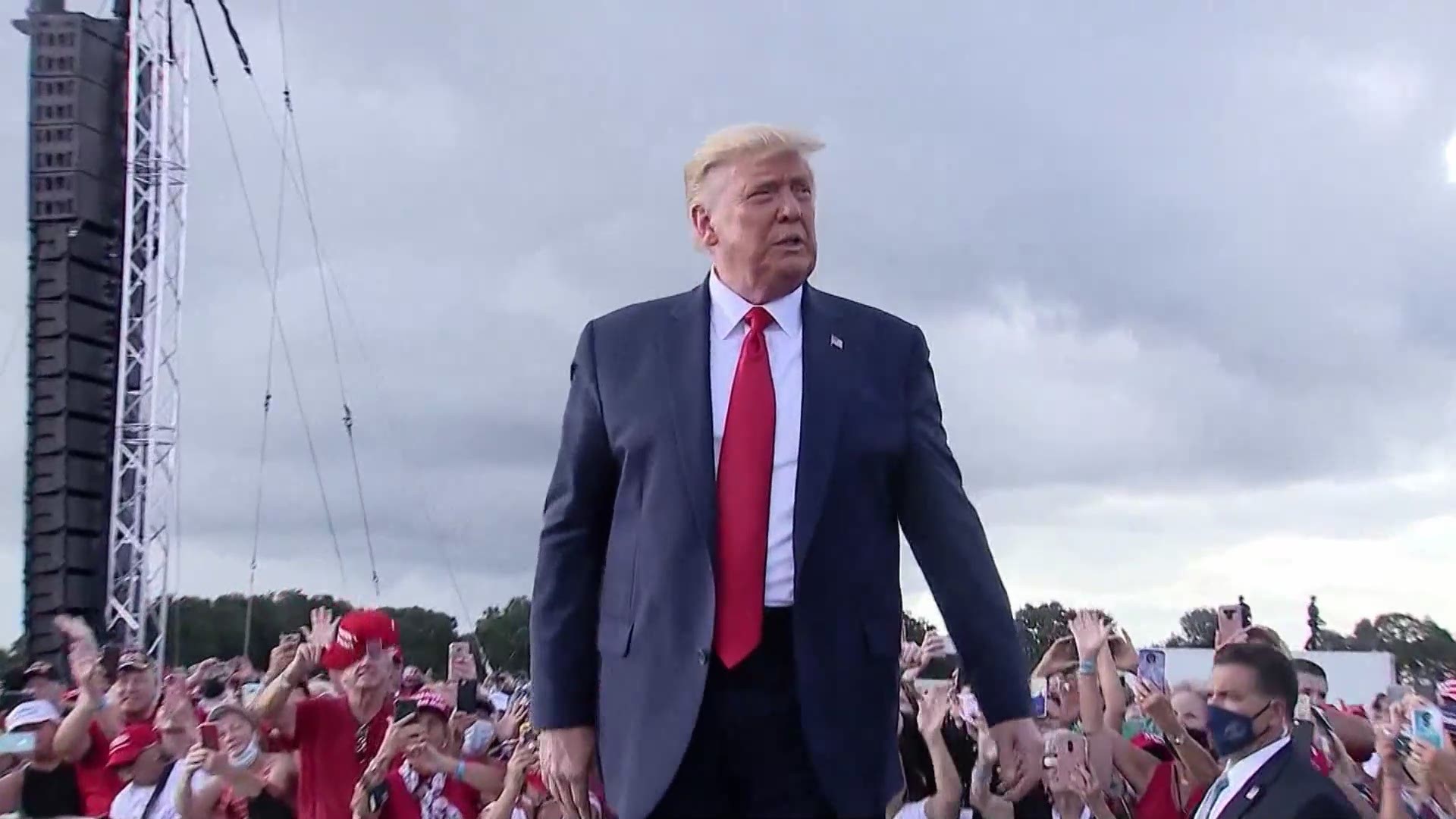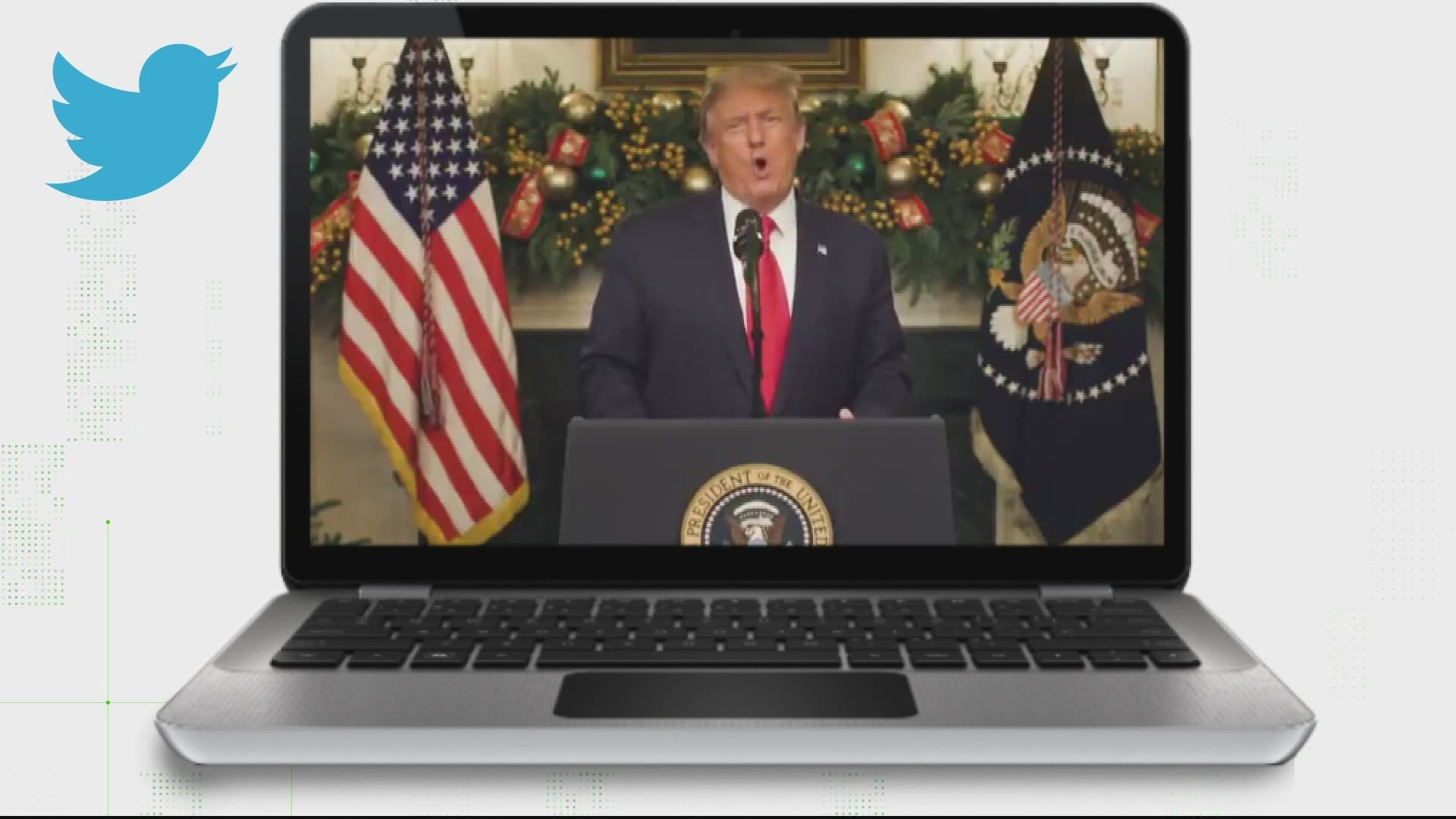WASHINGTON — QUESTION:
Can members of Congress use a process called 'budget reconciliation' to pass legislation with a simple majority, rather than the typical 60 votes needed to defeat a filibuster?
ANSWER:
Yes.
The process has been used 21 times since 1980, including most recently with the 2017 tax cuts, supported by former President Trump.
When crafting the budget, the Senate and House must pass what's called a 'budget resolution,' which tells individual committees how much they can spend and collect in revenue. The committees can then incorporate specific policy goals into the budget.
If the resolution calls for increased spending, the committees can then use that money for COVID-19 relief, as suggested by President Biden. Votes on the budget only require a simple majority, rather than the typical 60 votes needed to defeat a filibuster.
SOURCES:
- Center On Budget and Policy Priorities, "Introduction to Budget 'Reconciliation'"
- House Committee on the Budget, "Budget Reconciliation: The Basics"
- Dr. Casey Burgat, Legislative Affairs Program Director at The George Washington University
- Bill Dauster, Professor at Penn Arts and Sciences and former Deputy Chief of Staff on Policy for former Senate Majority Leader Harry Reid
PROCESS:
Despite Democratic control in both chambers and the White House, Congress remains remarkably split.
This is especially on display in the Senate, where Democrats hold the slimmest possible majority, with a 50-50 tie, broken by a vote by Vice President Kamala Harris.
Since most bills need 60 votes to pass in the Senate due to the filibuster, many Democratic advocates have started to call for action to be taken through "budget reconciliation," a maneuver that would only require a simple majority.
"It avoids the usual 60 vote hurdle that you have for doing pretty much anything in the U.S. Senate," Bill Dauster said, the former Deputy Chief of Staff on Policy for Former Majority Leader Harry Reid.
This process can only be used once per fiscal year, as it essentially incorporates provisions into the budget. The process has been used 21 times since 1980, including with the 2017 'Trump Tax' cuts passed with a simple majority.
"Budget reconciliation is kind of a one-shot opportunity to use the budget resolution that should be passed by the House and Senate," said Casey Burgat from The George Washington University. "And get it through the Senate in an expedited procedure."
What does the budget reconciliation process look like?
The House and Senate must first come to an agreement, passing an identical bill, known as a 'budget resolution.'
Casey described the resolution as the 'blueprint for the entire federal budget,' directing the various committees on how much money they can spend, and how much they can cut taxes.
The Center on Budget and Policy Priorities offered the following description of this first step:
"To start the reconciliation process," the post read. "The House and Senate must agree on a budget resolution that includes 'reconciliation directives' for specified committees."
"It sets the framework for what should be included in the budget," he said.
Dauster said that these directives are broad, leaving the specific policy choices to the committees.
"They can only give the committee a topline number," he said. "An amount of spending up to which they can spend or an amount of taxes up to which they can cut."
Those committees then decide how to spend the money and what cuts should be made before sending it back to the Budget Committee.
If Democrats decide to pursue the $1.9 trillion COVID-19 Relief Plan through 'budget reconciliation,' they would simply allocate more money through the budget resolution, so that the committees could use that money to make those changes.
The Byrd Rule: What provisions are allowed under budget reconciliation?
There are rules concerning what provisions can be added by the various committees.
"Only policies that change spending or revenues can be included," read the description on the House Committee on the Budget website.
In the Senate, the Byrd Rule, named after the late Senator Robert Byrd, offers further restrictions in an effort to prevent "the use of reconciliation to move a legislative agenda unrelated to spending or taxes," wrote the House Committee on the Budget.
Dauster explained that the Byrd Rule restricts six types of measures from being added through the reconciliation process:
- Measures with no budgetary effect
- Measures that worsen the deficit when a committee has not achieved it's reconciliation target
- Measures outside the jurisdiction of the committee that submitted the title or provision
- Measures that produce a budgetary effect that is merely incidental to the non-budgetary policy change
- Measures that increase deficits for any fiscal year outside the reconciliation window
- Measures that recommend changes in Social Security.
Dauster said that the 'merely incidental' wording could be used in a possible battle over the minimum wage aspect of the COVID-19 stimulus bill. It could be argued that this type of change is more of a policy shift than a mere adjustment of spending or taxes.
A senator can raise an objection to a provision added in these committees, according to the Center on Budget and Policy Priorities:
"Senators may raise parliamentary objections," the post read. "Termed 'points of order' against any provision of a bill or conference agreement that they believe to be extraneous under the Byrd Rule."
The fate of this provision would then be decided by the Senate Parliamentarian, who decides whether a provision violated the Byrd Rule. The current parliamentarian is Elizabeth MacDonough, appointed in 2012.
"She sits in a quasi-judicial fashion," said Dauster. "Hears arguments from both parties, and then considers those and makes a ruling."



